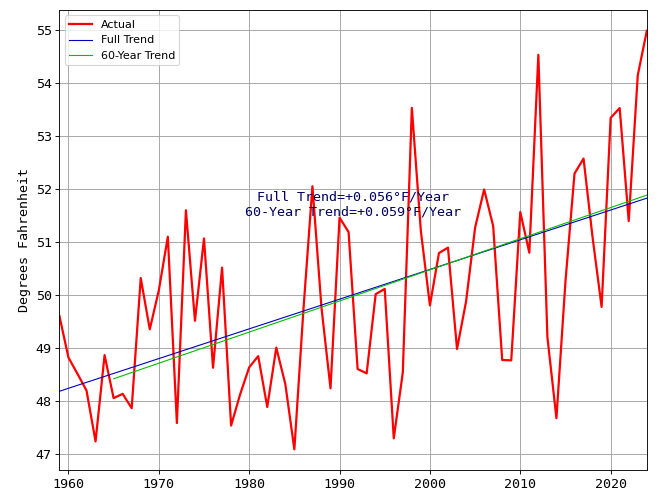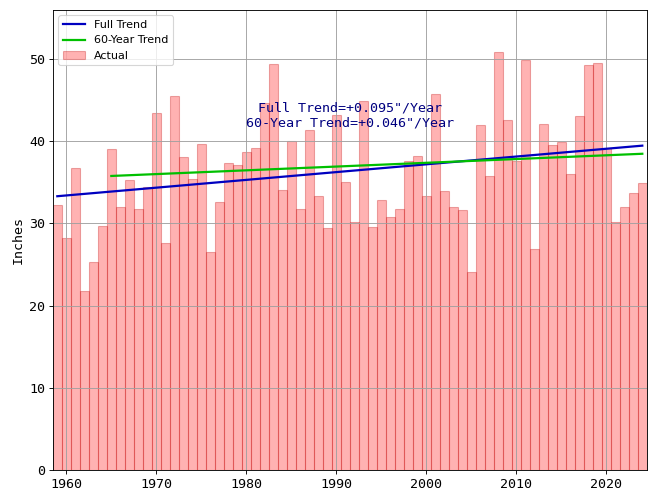Introduction
This website began as a personal project to analyze climate trends in Denver, Colorado, where I live. I wanted to understand how global warming was affecting my local area.
After creating the initial Denver climate analysis, I became interested in expanding the project to other regions of the country to compare how different areas are experiencing climate change. This led to the creation of the Chicago climate analysis section, which uses data from the O'Hare International Airport weather station.
The data for this analysis comes from two primary sources: the National Weather Service (NWS) and the National Oceanic and Atmospheric Administration (NOAA). We use data from 1959 to the present, with the 30 year windows making up the "normal" climate baseline. This is why our plots and statistics begin in 1989, allowing us to compare current conditions against this established baseline.
I found that many climate websites focus on either current weather or future projections, but there were fewer resources showing clear, easy-to-understand visualizations of historical climate trends. By creating these visualizations, I hope to make climate data more accessible and help people understand how their local climate is changing over time.
Temperature Trends in Chicago
Average yearly temperatures in Chicago over the past several decades:

The data shows a clear warming trend in Chicago's humid continental climate. While the city is known for its distinct seasons with cold winters and warm summers, the overall trajectory shows a significant increase in average temperatures. The plot includes a linear fit for all years from 1959 to present and also includes a linear fit for the last 60 years, showing the temperature trend in degrees per year. These rising temperatures have important implications for Chicago's urban heat island effect, lake effect weather patterns, and energy demands, potentially leading to more frequent heat waves and changes in winter precipitation patterns.
Precipitation Trends in Chicago
Total yearly precipitation in Chicago over the past several decades:

Chicago's precipitation patterns show interesting variations over time. The city's location on the shores of Lake Michigan influences its precipitation patterns, with lake-effect snow in winter and lake-breeze thunderstorms in summer. The yearly totals can vary significantly, with some years experiencing drought conditions while others see above-average rainfall. This variability is particularly important for the Great Lakes watershed and Chicago's urban infrastructure. The data helps us understand how climate change might be affecting the region's characteristic precipitation patterns and what that means for the future of water management in the area.